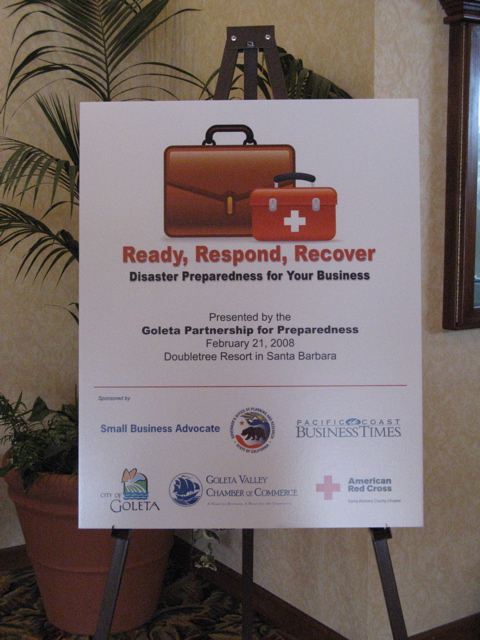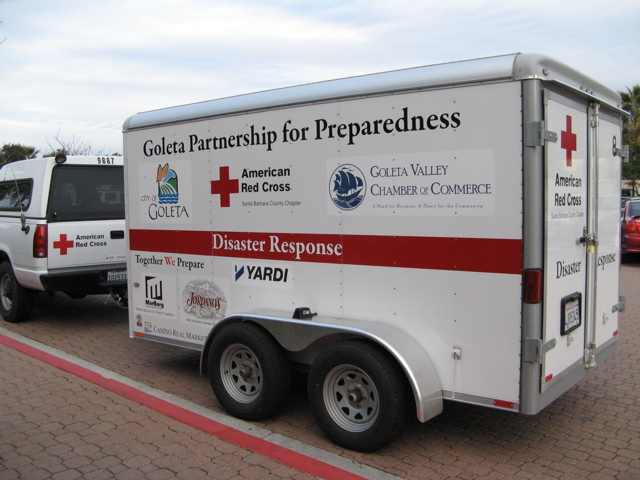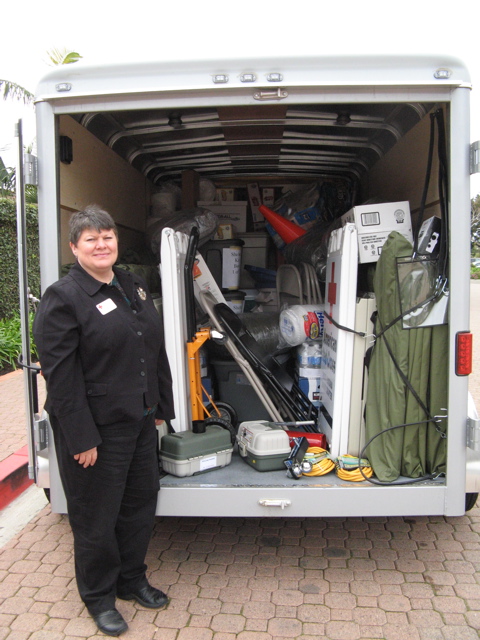Is the Good Land Ready for Disaster?
Goleta Partnerships Prepare Us for Emergencies; Junior High Programs Prevent Youth Problems

Fire, floods, earthquakes, toxic spills, tsunamis, hard drive breakdowns with no back up, even pandemics – these are all disasters that could hit Goleta, the Good Land. While we may not be able to prevent many of them, a spirit of collaboration is afoot. The City of Goleta, the Red Cross, and the Goleta Valley Chamber of Commerce are working together to coordinate public and private resources to be prepared and know what to do in an emergency.

Last September, the Goleta Partnership for Preparedness was launched and its first project was to raise $50,000 to purchase two Red Cross Shelter trailers equipped with cots and emergency supplies. The city contributed the first $10,000 and since then businesses throughout Goleta have come through with the balance. The Red Cross deals with a single family incident about every 10 days and they provide immediate help and also work to coordinate volunteers for help with long term recovery.
This week the partnership put on a workshop: “Ready, Respond, Recover: Disaster Preparedness for Your Business,” which covered a range of issues, including community resources, planning, and communication. Speakers all stressed the importance of being prepared for a disaster, but also of having a plan to recover in order to keep a business running after a disaster. If your business is destroyed, do you have back up for your hard drive stored off-site? Do you have business interruption insurance? Do you have an evacuation plan? If you can’t get out, which could happen on the south coast with our limited number of highways, do you have a plan for sheltering in place? Do you have a regular land- line phone system if the power goes out? Do you have enough cash if the ATMs aren’t working? Is your employee contact list up to date?
Keynote speaker, Kate King, president of the Napa Chamber of Commerce, echoed earlier speakers by stressing that while the government’s job is to take care of the big stuff – saving lives and repairing infrastructure – individuals and businesses need to plan to take care of themselves. Eighty percent of businesses without a plan that experience a disaster go out of business. She listed three things that you should carry with you at all times: a flashlight, a whistle, and a flash drive with scans of all your vital documents.

The Goleta Chamber of Commerce has an assessment survey online and is urging businesses to use it to review how well they are prepared for a disaster. They are suggesting that businesses pair up and mentor each other as they go through the process. The City of Goleta plans to outreach to schools, neighborhood groups, homeowners associations, and others, again underlining the importance of people having disaster plans for themselves.
That there will be disasters is predictable, but by being prepared we can minimize their impact. The Goleta Partnership for Preparedness is a step forward to achieving this goal.
Junior High School After-School Programs
Another kind of preparedness is prevention, and the junior high after-school program is one that provides positive activities for young people when they are at a very vulnerable age. Since incorporation in 2002, the City of Goleta has contributed toward these programs at Goleta Valley Junior High School, which are administered for all the junior highs by the City of Santa Barbara Parks and Recreation District.
Its director, Nancy Rapp, recently made a presentation to the Goleta City Council. She said that youth crime peaks at 3:30 to 4 p.m. just after school lets out. It was important to have programs at the schools sites, where the children are, and that the programs be free. When fees were charged in 2004, participation plummeted and only now are they beginning to get the numbers back up. Club sports are expensive and beyond the reach of many kids, so these school site programs are vital. At the moment most are sports programs, with interschool contests, but these do not interest all students.
Mayor Michael Bennett asked what it would take to bring participation back to earlier levels. Diversity of programs was said to be key. They hope next year to include arts, chess clubs, writing, and other programs, with assistance from some nonprofit groups. The Santa Barbara Education Foundation will underwrite a survey of students at all four junior highs to find out what their interests are. They will then use this to initiate new programs.
The council voted to increase its funding for the current year from $7,000 to $10,000 with the understanding that this amount could be increased the following year, depending on the plans for the program in the future. All council members stressed the importance of reaching kids in this age group. This investment in our children through active engagement in enriching activities is definitely a recipe for prevention.



